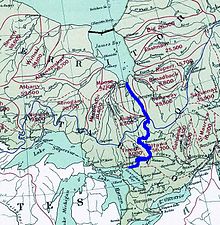Apparently
@AlexBozikovic is now moonlighting as the Globe and Mail's climate change reporter............
Temperatures are only expected to keep rising, and silence on the issue shows we’re not ready

www.theglobeandmail.com
FWIW, its a good column, in so far as it rightly notes Toronto is likely to see more extremely warm days, much more often in years ahead; and that many residents, particularly those in older apartments are very vulnerable to this in that they often lack air conditioning.
I would love to Alex do a follow up though on more specific actions that the City ought to be taking; and try to put a cost number on them too whether that cost is on the City or is one imposed by the City on landlords or others.
I have a few thoughts:
1) One of the worst sources of heat in this City is surface parking lots. We need a by-law requiring that that surface parking must be shaded by trees. I think a reasonable requirement would be that a parking lot should be designed to support no less than 70% shade (100% being ideal) on June solstice. The highest priority should be surface lots beside apartment buildings. In order to achieve this, we first have to waive any requirement on landlords in respect of the amount of parking.
Second, we need to mandate the change I describe when ever a lot under goes reconstruction. Third, we need to put a hard limit on meeting the requirement (so as not to excuse those who defer paving work), say by 2035.
Finally, we need to consider incentives. The City could rebate the cost 50% of the cost of de-paving a parking spot and adding a tree, off of the landlord's tax bill.
2) Extend the logic of the above to removing parking pads in front of homes.
3) In the case of commercial parking lots, apply a stormwater tax that is reduced by meeting permeability and shading requirements.
4) Raise the cost of permit parking to full market rates over 3-5 years; use the associated reduction in uptake to narrow roads, particularly wider collector roads by adding back a tree-lined boulevard.
5) A maximum temperature by-law does need to be imposed on landlord's in the medium term. However, there are inter-related options that can be looked at in the nearer term. Many older buildings have dated and sometimes dangerous electrical. One thing that makes it dangerous is that most apartments were built for 60-amp service which means air conditioners very fully tax and sometimes overheat wires, especially w/portables or older units where compressors are failing. Mandating that all apartments have a minimum of 100amp electrical service on a modern, circuit-breaker panel would at least allow those who can afford a/c to install it safely.
Mandates around a/c are going to be problematic in that its a very expensive retrofit into buildings that don't have central air. It requires one of, installing central air, installing direct-vent air conditioners in each unit or an alternative cooling system.
I'm fine with a conventional mandate, but I'd love to see some exploration of whether radiator pipes can be effectively used to deliver cold in the summer similar to heat-exchange systems. My understanding is that due to reduced temperature differential such a system would be much less effective at cooling than heating. But if it was good enough to lower a temperature from 30+ to say 24.........it may not be comfortable, but it would still be a drastic improvement.
****
Pavement being a huge source of heat, we all have to address highways, none moreso than the 401.
We have to look at alternative pavements that absorb less heat for a start; but we also need to consider ways to shade the pavement, and do so cost-effectively and practically. Lining the highway with shade trees isn't the most practical choice for a host of reasons.
While 'decked' sections with parks over the top could work, that certainly won't the norm along the entire highway.
We need other means to address these issues as well.






/https://www.thestar.com/content/dam/thestar/news/canada/2021/08/09/urgent-climate-change-action-is-needed-or-else-canadas-extreme-heat-and-severe-weather-will-worsen/lytton.jpg)


/cloudfront-us-east-1.images.arcpublishing.com/tgam/LRASSHJ45FDQPBEU454ZG4M7DQ.jpg)